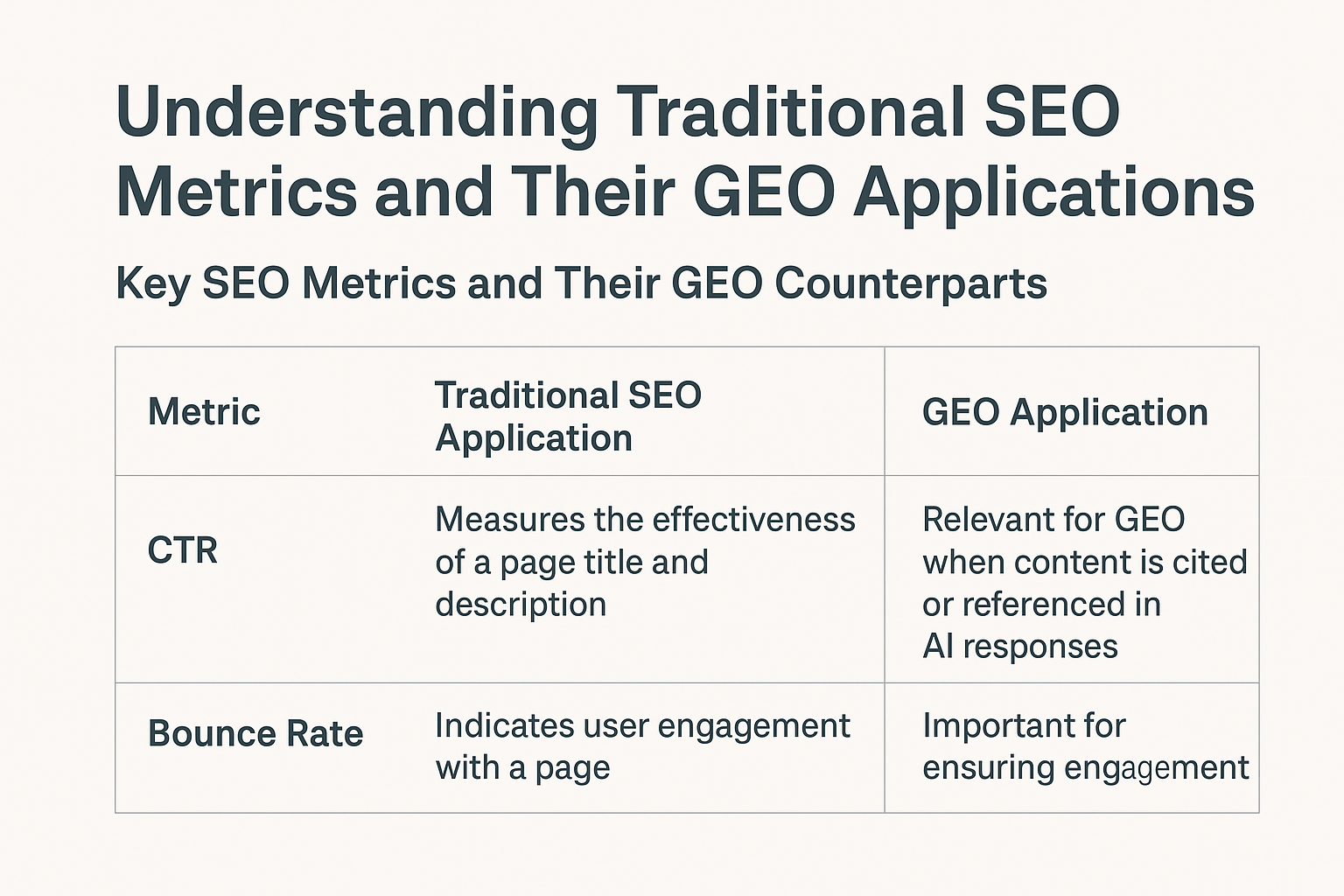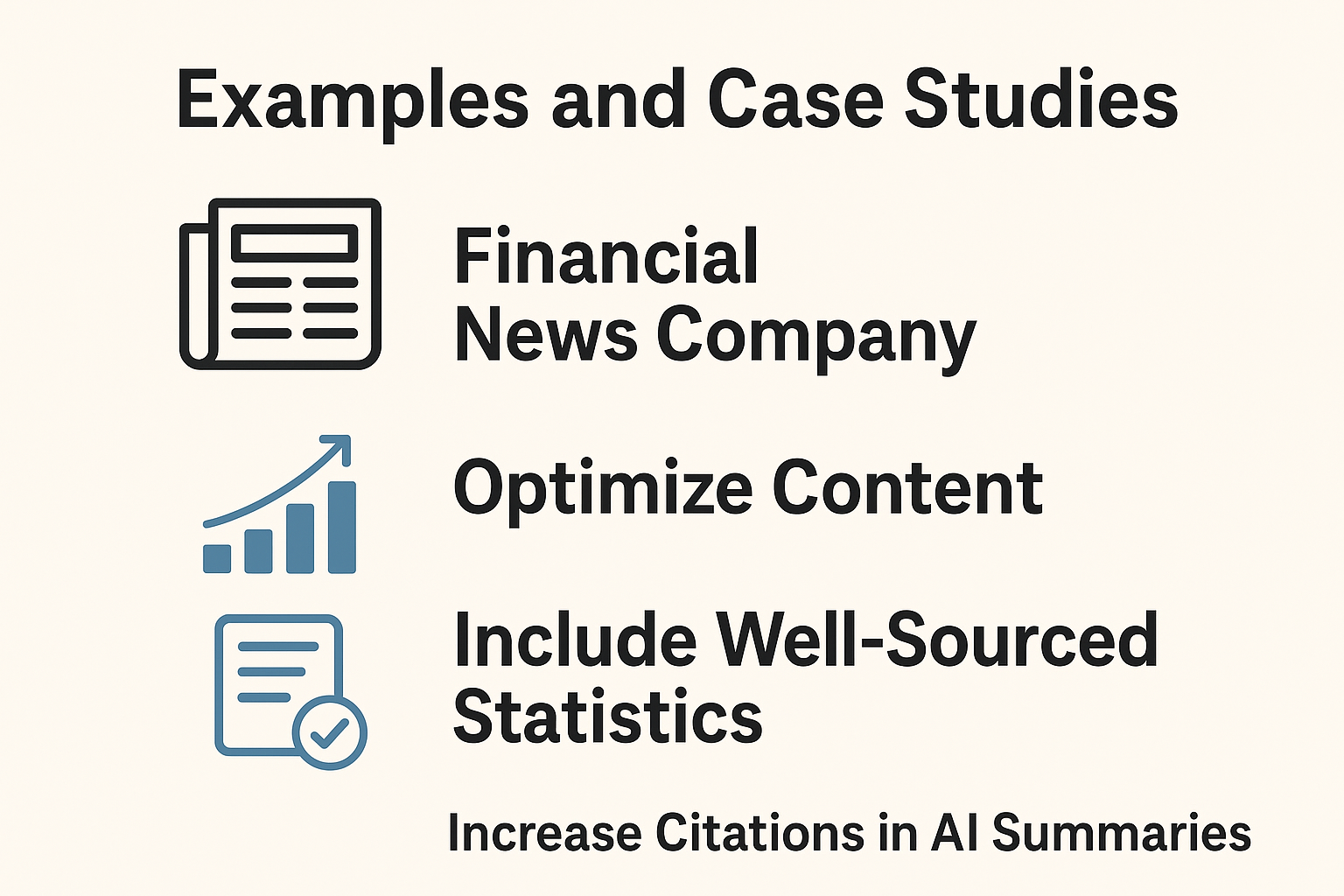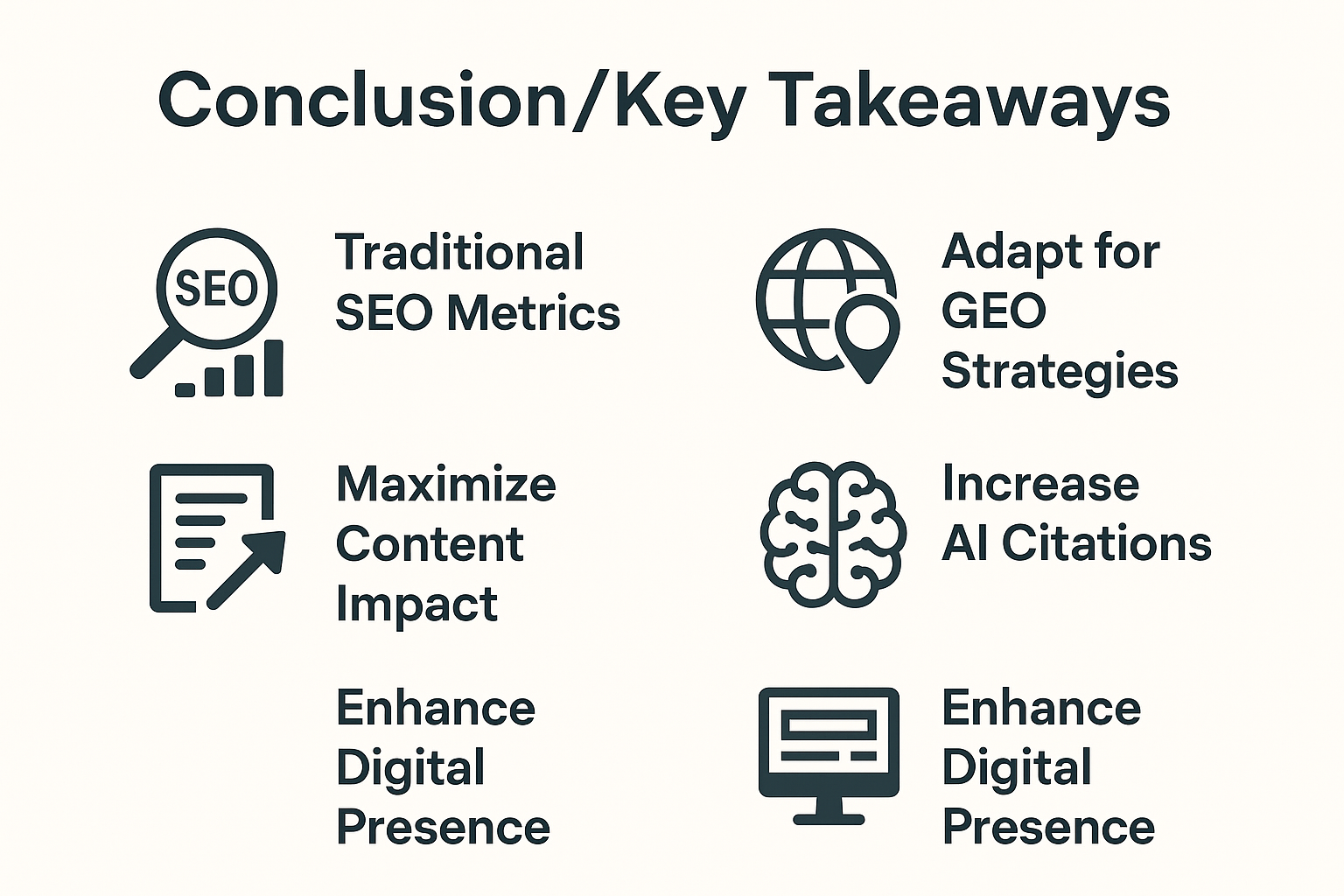Intro to GEO Metrics: PCV, WSU, CPD in plain English

TL;DR
Generative Engine Optimization (GEO) metrics, such as PCV (Page Citations View), WSU (Web Semantic Understanding), and CPD (Content Potential Dynamics), are not directly referenced in existing literature. However, understanding traditional SEO metrics and how they might be adapted for GEO is crucial. This post will explore the principles of GEO and discuss how traditional SEO metrics can be aligned with emerging GEO strategies to enhance digital presence in AI-driven search environments.
Introduction
As AI-driven search engines continue to evolve, optimizing content for these platforms has become a new frontier in digital marketing. Generative Engine Optimization (GEO) is the practice of structuring content to be easily understood and synthesized by AI systems, aiming to increase visibility in AI-generated responses[[1]](https://bigdogict.com/geo-blog/what-is-the-difference-between-geo-and-seo/)[[2]](https://searchengineland.com/what-is-generative-engine-optimization-geo-444418). However, specific metrics like PCV, WSU, and CPD are not widely documented. Instead, we will focus on how traditional SEO metrics can be adapted to support GEO strategies.

Understanding Traditional SEO Metrics and Their GEO Applications
Adapting SEO Metrics for GEO
Traditional SEO metrics focus on ranking in search engine results pages (SERPs) and driving organic traffic. These metrics include click-through rate (CTR), bounce rate, time on page, and conversion rates[[1]](https://bigdogict.com/geo-blog/what-is-the-difference-between-geo-and-seo/). For GEO, the focus shifts to making content a valuable source for AI-generated answers.
Key SEO Metrics and Their GEO Counterparts:
| Metric | Traditional SEO Application | GEO Application |
|--------|-----------------------------|-----------------|
| CTR | Measures the effectiveness of a page title and description. | Relevant for GEO when content is cited or referenced in AI responses. |
| Bounce Rate | Indicates user engagement with a page. | Important for ensuring content is structured well for AI interpretation. |
| Time on Page | Reflects user engagement and content relevance. | Useful in assessing how well AI models can extract information from content. |
| Conversion Rates | Measures the effectiveness of a website in achieving business goals. | Essential for tracking how often AI-generated responses lead to conversions. |
GEO-Specific Success Indicators
While specific GEO metrics like PCV, WSU, and CPD are not defined, success in GEO can be measured by:
- Citations in AI Responses: How often your content is cited as a source.
- Brand Mentions: The frequency with which your brand is mentioned in AI-generated content.
- Visibility Across AI Platforms: Presence in multiple AI-driven search outputs.
Implementing GEO Strategies
To optimize for GEO, focus on creating content that is:
- Authoritative: Use credible sources and structures.
- Semantically Rich: Incorporate terms that help AI understand context[[5]](https://gofishdigital.com/blog/what-is-generative-engine-optimization/).
- Well-Structured: Ensure clarity and coherence for AI interpretation[[3]](https://www.manhattanstrategies.com/insights/what-is-geo-an-in-depth-explanation-of-generative-engine-optimization).

Examples and Case Studies
For instance, a company specializing in financial news might optimize its content by including well-sourced statistics and economic data. This not only enhances credibility but also increases the likelihood of being cited in AI-generated financial summaries[[1]](https://bigdogict.com/geo-blog/what-is-the-difference-between-geo-and-seo/).

Conclusion/Key Takeaways
While traditional SEO metrics provide a solid foundation for understanding digital visibility, adapting these metrics to support GEO strategies is essential for maximizing content's impact in AI-driven search environments. By focusing on creating authoritative, semantically rich content, businesses can increase their chances of being cited in AI-generated responses, thereby enhancing their digital presence.
FAQs
- Q: What is GEO?
A: Generative Engine Optimization (GEO) is the process of optimizing content to be easily understood and utilized by AI-driven search engines.
- Q: How does GEO differ from SEO?
A: SEO focuses on traditional search engine rankings, while GEO aims to make content a source for AI-generated responses.
- Q: What metrics should I use to measure GEO success?
A: While specific GEO metrics are not defined, success can be measured by citations in AI responses, brand mentions, and visibility across AI platforms.
Citations
- What Is the Difference Between GEO and SEO
- What is Generative Engine Optimization (GEO)
- What is GEO? An In-Depth Explanation of Generative Engine Optimization
- GEO vs SEO: Understanding the Differences
- What is Generative Engine Optimization (GEO)? Guide for 2025
- What is Generative Engine Optimization (GEO) & how does it impact
- GEO vs SEO: The Difference & Why It Matters for Your Content
- What Is GEO in SEO? A Guide to Location-Based Optimization
- What is Generative Engine Optimization (GEO) and how does it
- Blog Semrush (General SEO Metrics)
- Ahrefs Blog (SEO Strategy)
- Moz Blog (SEO Best Practices)
- BrightEdge Blog (SEO and Content)
- Conductor Blog (SEO Insights)
- Screaming Frog Blog (SEO Tools and Strategies)